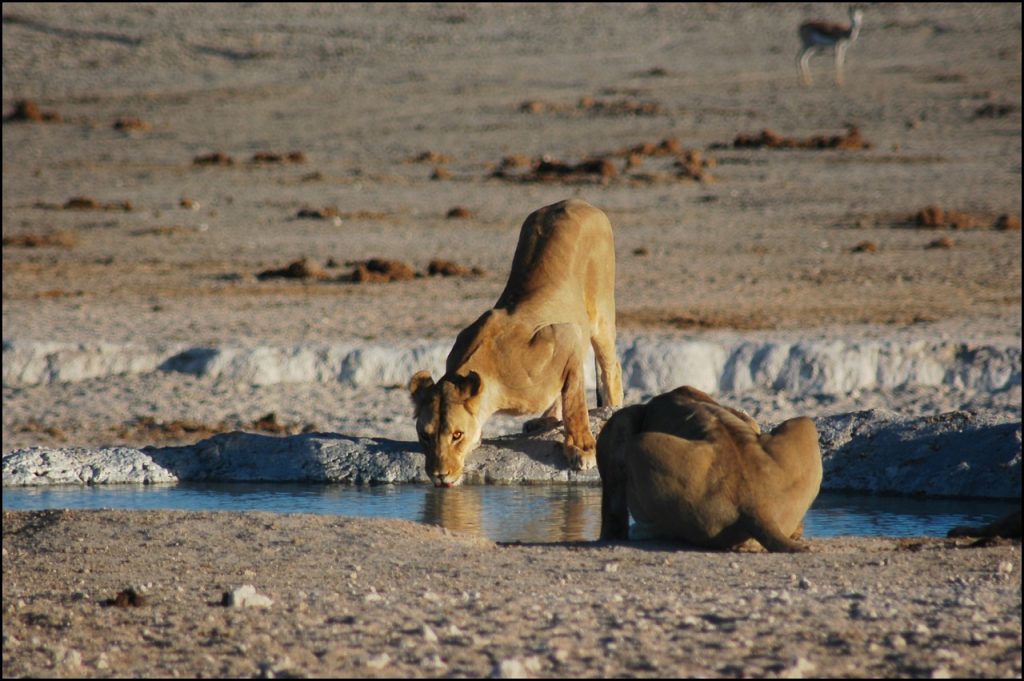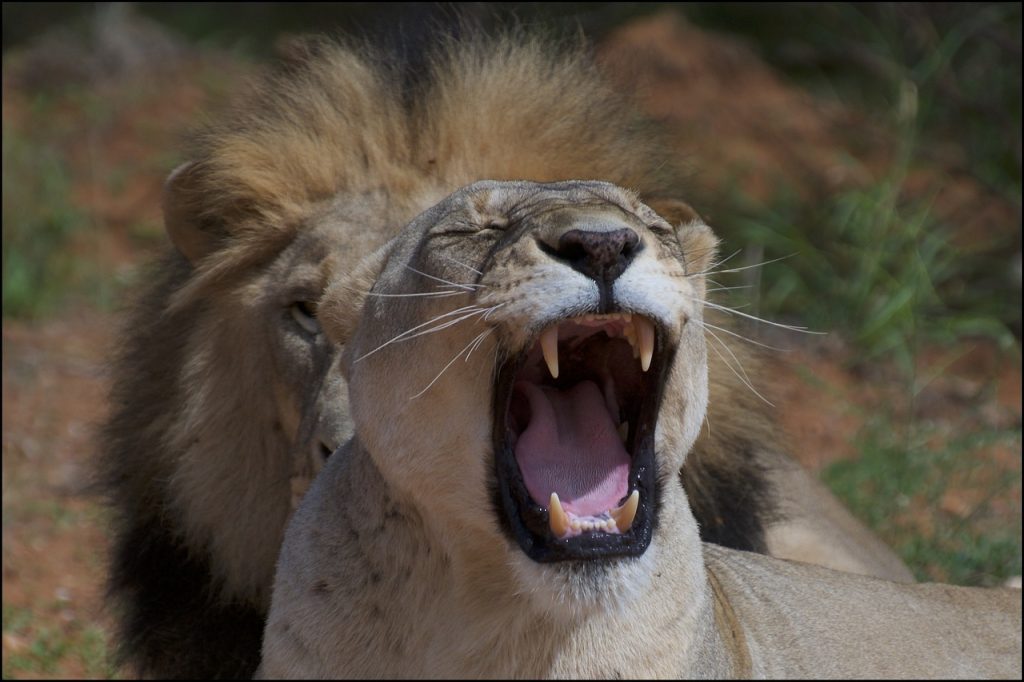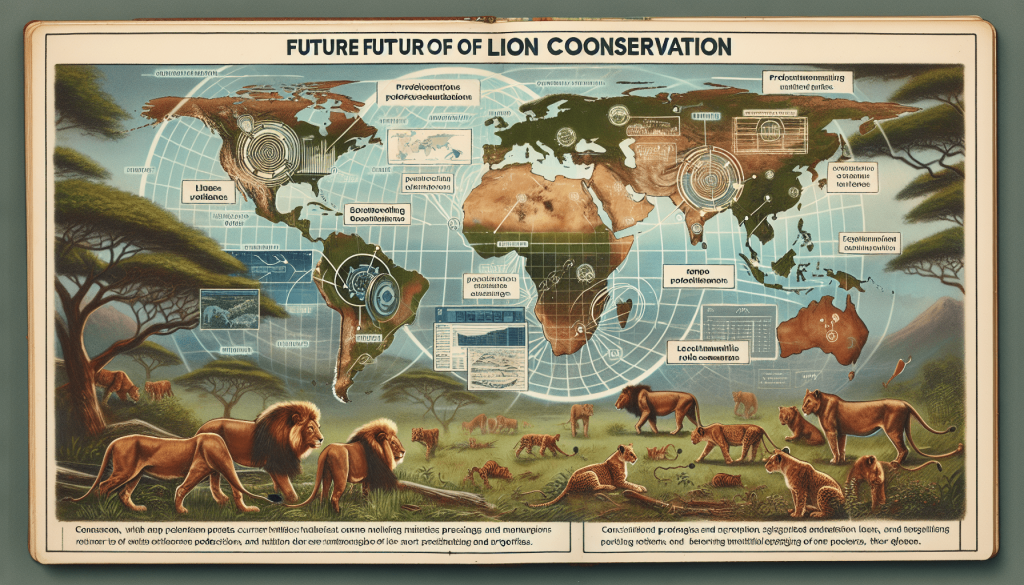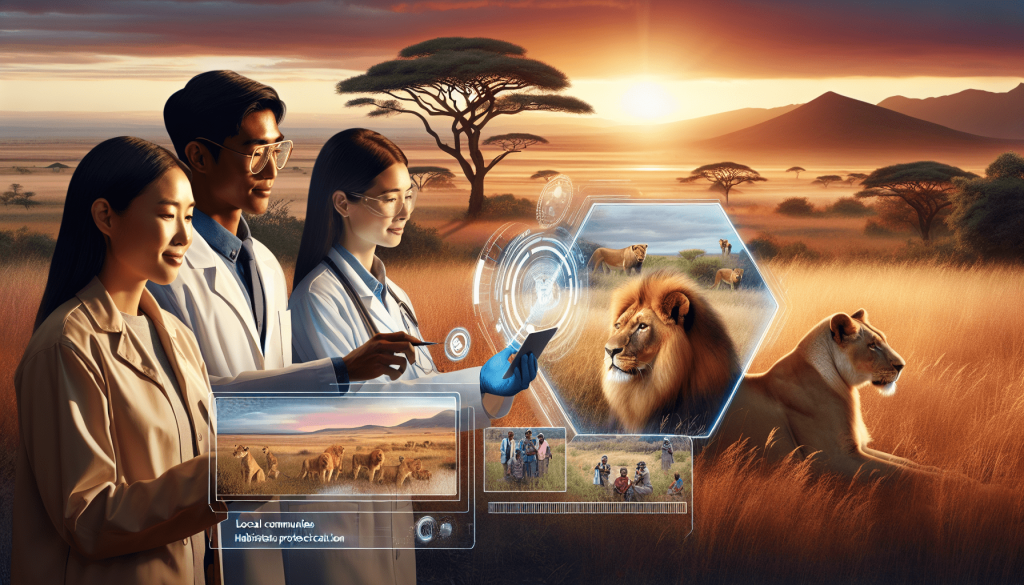Imagine a world where majestic lions roam freely across vast savannahs, their thunderous roars echoing in the distance. However, this serene image is under threat as lion populations continue to decline rapidly. In the face of this alarming situation, the future of lion conservation is of utmost importance. Predictions and priorities must be established to ensure the survival of these magnificent creatures. In this article, we will explore the challenges facing lion conservation efforts and discuss the strategies needed to create a future where lions thrive.

I. Current State of Lion Conservation
1.1 Population Decline
The current state of lion conservation is concerning, as lion populations have experienced a significant decline over the past century. According to estimates, there has been a 50% decline in lion populations in Africa since the 1990s, with less than 20,000 remaining today. This decline is mainly attributed to habitat loss, poaching, and human-wildlife conflict.
1.2 Habitat Loss
Lion populations are facing the devastating consequences of habitat loss. As human populations expand and agricultural practices intensify, lion habitats are being fragmented and degraded. This loss of natural habitat restricts the movement and dispersal of lions, leading to isolation and reduced gene flow between populations. The conversion of land for farming, infrastructure development, and extractive industries further exacerbates the problem, leaving lions with smaller and increasingly fragmented territories.
1.3 Human-Wildlife Conflict
Human-wildlife conflict is a significant threat to lion conservation. As human populations grow and expand into previously wild areas, conflicts often arise between humans and lions. Lions may prey on livestock, leading to retaliation from local communities. This conflict not only results in the loss of livelihood for communities dependent on agriculture and livestock but also puts lions at risk of retaliatory killings. It is crucial to address human-wildlife conflict to mitigate its impact on lion populations.
II. Technological Advancements in Lion Conservation
2.1 Drone Technology
Drones have emerged as a valuable tool in lion conservation efforts. Equipped with high-resolution cameras, drones enable researchers and conservationists to monitor lion populations and their behavior without disturbing them. Aerial surveys conducted by drones provide valuable data on lion distribution, habitat use, and population dynamics. Drones also assist in anti-poaching efforts by detecting poacher activities and potential threats to lions, allowing for prompt intervention.
2.2 GPS Tracking
GPS tracking technology has revolutionized the way we understand lion movements and behavior. By fitting lions with GPS collars, researchers can monitor their movements in real-time, gaining insights into their ranging patterns, territorial boundaries, and interactions with other individuals. This information helps identify important habitats, corridors, and potential conflict hotspots, aiding in the formulation of effective conservation strategies.
2.3 Camera Traps
Camera traps have proven to be an invaluable tool for studying elusive and nocturnal species like lions. These remotely triggered cameras provide a non-invasive way to monitor lion populations, capturing images and videos of individual lions for identification, population estimation, and behavioral analysis. Camera trap networks can cover vast areas, providing comprehensive data on lion populations and their habitat use.
III. Predictions for the Future of Lion Conservation
3.1 Increased Collaboration
The future of lion conservation lies in increased collaboration among various stakeholders, including governments, NGOs, local communities, and the private sector. Collaborative efforts can pool resources, expertise, and knowledge to tackle the complex challenges facing lion populations. By breaking down silos and working together, we can create a more holistic and effective approach to lion conservation.
3.2 Innovative Solutions
Innovation will play a crucial role in the future of lion conservation. Technological advancements, such as advanced genetics, artificial intelligence, and remote sensing, hold great potential in improving our understanding of lion populations and their conservation needs. Additionally, innovative solutions like bio-fencing, which uses natural deterrents to prevent human-lion conflicts, can help mitigate conflict and protect both humans and lions.
3.3 Policy Changes
To secure the future of lion conservation, policy changes at local, national, and international levels are essential. Governments should prioritize lion conservation by implementing and enforcing legislation that protects lions and their habitats. Incentives for sustainable land use practices, conservation-friendly agricultural policies, and stricter penalties for wildlife crimes are crucial. International cooperation and agreements can further strengthen the conservation efforts and ensure a global approach to lion conservation.
IV. Priorities in Lion Conservation
4.1 Protecting Lion Habitats
The protection and restoration of lion habitats must be a top priority in conservation efforts. This requires identifying and safeguarding critical habitats, minimizing habitat fragmentation, and promoting sustainable land-use practices that coexist with lion populations. Protected areas and wildlife corridors play a vital role in ensuring lion habitats are connected and provide sufficient space for population growth and gene flow.
4.2 Reducing Human-Wildlife Conflict
Addressing human-wildlife conflict is crucial for the long-term survival of lions. Implementing effective strategies to reduce conflict, such as community-based conservation initiatives, early warning systems, and compensation programs for livestock losses, can help alleviate the tensions between local communities and lions. Educating communities about the importance of conserving lions and promoting coexistence can foster positive attitudes towards lion conservation.
4.3 Monitoring and Research
Continued monitoring and research are fundamental to understanding lion populations and their dynamics. This includes long-term monitoring of population trends, genetic diversity, and social behavior, as well as researching the impacts of climate change on lion habitats. Efforts should be made to involve local communities and engage citizen scientists in data collection, enhancing the capacity for ongoing monitoring and research.

V. Role of Local Communities in Lion Conservation
5.1 Community-Based Conservation Initiatives
Local communities play a pivotal role in lion conservation. Engaging and empowering communities in conservation efforts through community-based initiatives, such as conservation agreements, co-management programs, and sustainable utilization of natural resources, can generate tangible benefits for both people and wildlife. Involving communities in decision-making processes and sharing the benefits of conservation creates a sense of ownership and fosters support for lion conservation.
5.2 Sustainable Livelihoods
Promoting sustainable livelihood options for communities living alongside lions is critical for fostering support and reducing human-wildlife conflict. Providing alternative income-generating activities, such as ecotourism, sustainable agriculture, and crafts, can diversify local economies and reduce dependence on activities that harm lion populations. Empowering local communities to benefit from lion conservation ensures their active participation and long-term commitment to a shared goal.
5.3 Education and Awareness
Education and awareness initiatives are vital to instill a sense of stewardship and appreciation for lions among local communities. Educational programs in schools, community workshops, and outreach campaigns can promote a greater understanding of the ecological importance of lions, their cultural significance, and the shared responsibility of conserving them. By fostering a sense of pride and ownership in local communities, we can create a sustainable future for lion conservation.
VI. Financing and Fundraising for Lion Conservation
6.1 Government and NGO Funding
Securing adequate funding from governments and NGOs is crucial for lion conservation efforts. Governments should allocate sufficient resources to implement conservation policies, establish and manage protected areas, and support local communities in conservation initiatives. NGOs can also play a key role in mobilizing funds and resources, supporting research and monitoring, and implementing community-based conservation programs.
6.2 Private Donations
Private donations from individuals, philanthropists, and corporations can significantly contribute to lion conservation. Donors who are passionate about wildlife conservation can support various initiatives, including habitat protection, anti-poaching efforts, and community empowerment programs. Creating awareness and engaging potential donors through targeted campaigns can help generate the financial resources needed to support lion conservation.
6.3 Corporate Sponsorship
Engaging the corporate sector through partnerships and sponsorships can provide critical funding for lion conservation initiatives. Businesses that align their corporate social responsibility efforts with wildlife conservation can contribute financially and also raise awareness through their networks and customer base. Collaborative initiatives, such as cause-related marketing campaigns and sponsorship of research projects, ensure that corporate support extends beyond financial contributions and includes active involvement in conservation efforts.

VII. The Importance of Genetic Diversity in Lion Conservation
7.1 Inbreeding and its Consequences
Maintaining genetic diversity is vital for the long-term survival of lion populations. Inbreeding, resulting from small and isolated populations, increases the risk of genetic disorders, reduced reproductive success, and decreased adaptability to environmental changes. Genetic studies can guide conservation efforts by identifying genetically important individuals and populations, enabling targeted interventions to prevent inbreeding and enhance genetic diversity.
7.2 Translocations and Genetic Rescue
Translocations and genetic rescue programs can help mitigate the negative effects of inbreeding and increase genetic diversity. By moving individuals between populations or introducing new individuals from different genetic lineages, genetic rescue efforts aim to strengthen the gene pool and improve the overall health and resilience of lion populations. These interventions require careful planning, genetic analysis, and collaboration between conservation organizations and local communities.
7.3 Conservation Breeding Programs
Conservation breeding programs can contribute to the conservation of lions in regions where populations are critically small or declining. These programs aim to establish assurance colonies by breeding genetically diverse individuals, providing a safety net against catastrophic events or population decline. However, conservation breeding should always be viewed as a last resort, complementing rather than replacing efforts to conserve wild populations and their natural habitats.
VIII. Conservation Success Stories and Lessons Learned
8.1 Reintroduction of Lions in Protected Areas
Successful reintroduction programs have demonstrated the potential for recovering lion populations in specific areas. By reintroducing lions to suitable habitats within protected areas, where threats have been mitigated and prey populations are sufficient, conservation organizations have successfully restored viable lion populations. These success stories highlight the importance of protecting habitats and implementing comprehensive conservation strategies to ensure the long-term survival of reintroduced populations.
8.2 Community-Driven Conservation Projects
Community-driven conservation projects have proven to be effective in fostering local support and achieving sustainable conservation outcomes. Examples of community-led initiatives include community-based anti-poaching units, wildlife-monitoring networks, and revenue-sharing models from tourism activities. These projects empower local communities, alleviate poverty, and enable people to become stewards of their natural resources, resulting in positive attitudes towards conservation and reduced human-wildlife conflict.
8.3 Global Efforts for Lion Conservation
Lion conservation efforts have gained momentum globally, with organizations, governments, and individuals working collectively towards a shared goal. The establishment of international agreements, such as the Convention on International Trade in Endangered Species (CITES), provides a framework for regulating and monitoring lion trade. Global awareness campaigns, research collaborations, and fundraising initiatives have also played a significant role in raising public awareness and mobilizing support for lion conservation.

IX. The Role of Tourism in Lion Conservation
9.1 Sustainable Wildlife Tourism
Sustainable wildlife tourism can serve as a powerful conservation tool for lions. Responsible tourism practices that prioritize animal welfare, minimize environmental impact, and support local communities can generate revenue for conservation efforts. Well-managed wildlife tourism can create economic incentives for communities to protect lion populations and their habitats, while offering visitors an opportunity to appreciate lions in their natural environment.
9.2 Economic Benefits for Local Communities
Well-regulated wildlife tourism can provide significant economic benefits to local communities living alongside lion populations. Tourism revenues can support community development, infrastructure, and healthcare, reducing the dependence on activities that harm lions, such as unsustainable agriculture or poaching. By involving communities in tourism planning and revenue-sharing mechanisms, local people can become active participants in lion conservation and witness direct benefits from protecting these iconic species.
9.3 Responsible Tourism Practices
Responsible tourism practices are essential to ensure that tourism activities do not have a negative impact on lion populations. Strict regulations and monitoring are necessary to prevent overcrowding, disturbance to lions, or habitat degradation caused by tourism infrastructure. Education and awareness programs for tourists can promote responsible behavior, such as maintaining a safe distance from lions, refraining from feeding or interacting with them, and respecting their natural behavior and habitat.
X. Advocacy and Awareness for Lion Conservation
10.1 Media and Communication Strategies
Media and communication strategies play a crucial role in raising awareness about lion conservation issues and mobilizing public support. Engaging with the media, including social media platforms, helps disseminate information, highlight success stories, and advocate for policy changes to protect lions. Innovative communication campaigns, documentaries, and celebrity endorsements can captivate audiences and inspire action for lion conservation.
10.2 Public Engagement and Education Campaigns
Public engagement and education campaigns are instrumental in fostering a sense of responsibility and empowering individuals to contribute to lion conservation. These campaigns can target schools, local communities, and the general public, providing information about lion ecology, conservation challenges, and simple actions that people can take to support lion conservation. By instilling a sense of connection and empathy, public engagement campaigns can galvanize collective action for lion conservation.
10.3 Celebrity and Influencer Support
Celebrities and influencers have a unique platform to raise awareness about lion conservation issues, reach a wide audience, and inspire positive action. Their involvement in conservation campaigns, fundraising events, and public awareness initiatives can generate significant media attention and mobilize public support. By leveraging their influence, celebrities and influencers can provide a powerful voice for lions and advocate for their protection.


